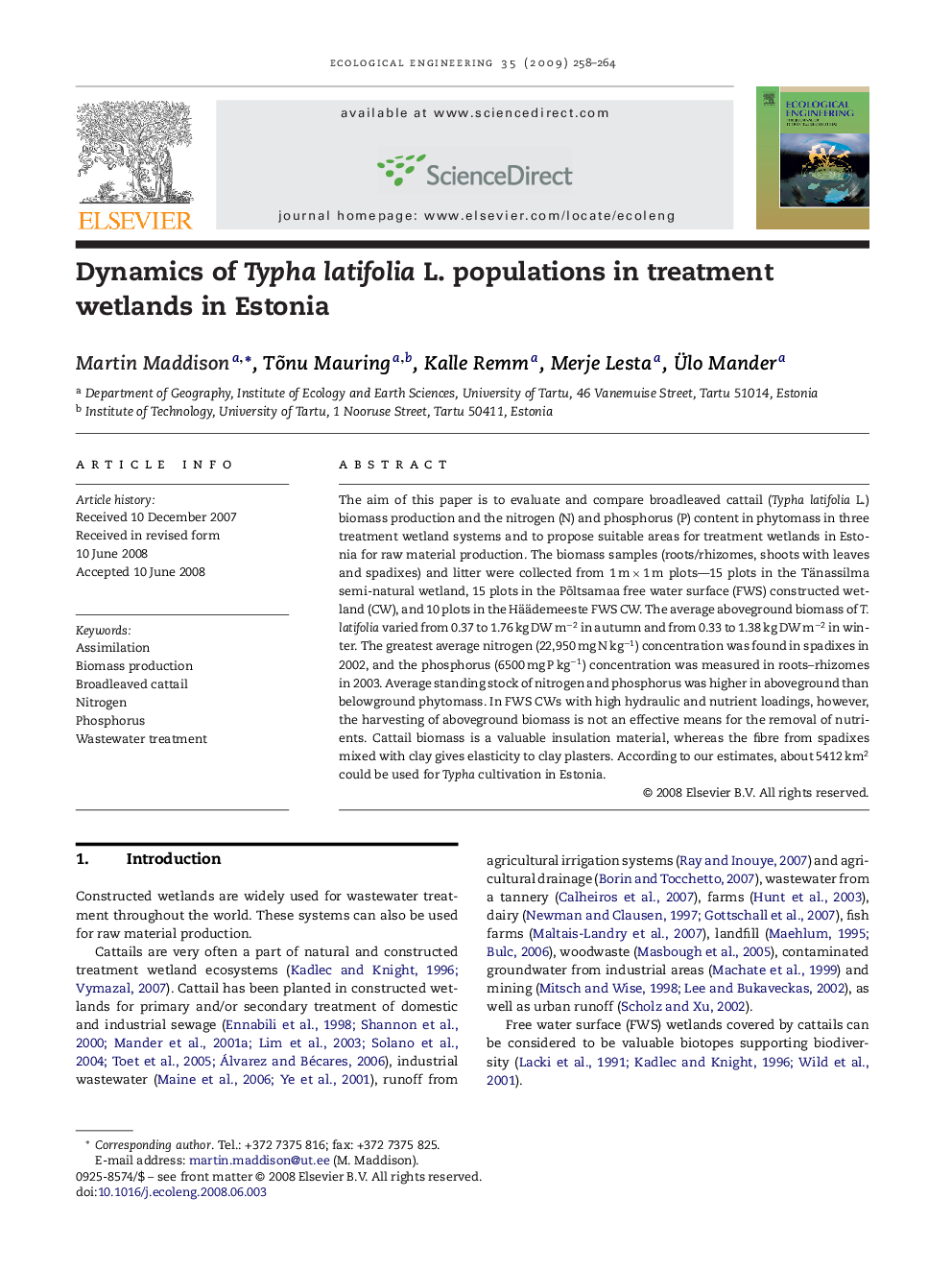| Article ID | Journal | Published Year | Pages | File Type |
|---|---|---|---|---|
| 4391025 | Ecological Engineering | 2009 | 7 Pages |
The aim of this paper is to evaluate and compare broadleaved cattail (Typha latifolia L.) biomass production and the nitrogen (N) and phosphorus (P) content in phytomass in three treatment wetland systems and to propose suitable areas for treatment wetlands in Estonia for raw material production. The biomass samples (roots/rhizomes, shoots with leaves and spadixes) and litter were collected from 1 m × 1 m plots—15 plots in the Tänassilma semi-natural wetland, 15 plots in the Põltsamaa free water surface (FWS) constructed wetland (CW), and 10 plots in the Häädemeeste FWS CW. The average aboveground biomass of T. latifolia varied from 0.37 to 1.76 kg DW m−2 in autumn and from 0.33 to 1.38 kg DW m−2 in winter. The greatest average nitrogen (22,950 mg N kg−1) concentration was found in spadixes in 2002, and the phosphorus (6500 mg P kg−1) concentration was measured in roots–rhizomes in 2003. Average standing stock of nitrogen and phosphorus was higher in aboveground than belowground phytomass. In FWS CWs with high hydraulic and nutrient loadings, however, the harvesting of aboveground biomass is not an effective means for the removal of nutrients. Cattail biomass is a valuable insulation material, whereas the fibre from spadixes mixed with clay gives elasticity to clay plasters. According to our estimates, about 5412 km2 could be used for Typha cultivation in Estonia.
